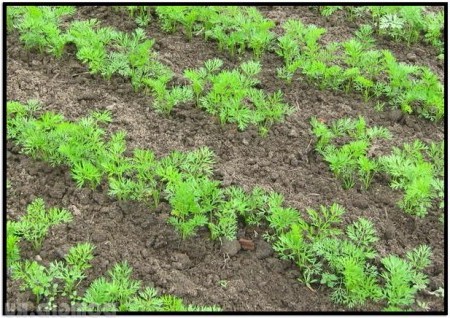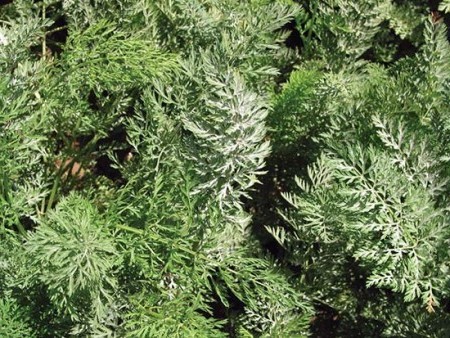Powdery mildew, affecting the leaves, sharply worsens the quality of root crops: not receiving nutrition from diseased leaves, they stop growing and become stringy. With severe development of the disease, the leaves become completely covered with a white coating and then die.
The impetus for the occurrence of the disease is underwatering: as soon as the plants lose turgor once, powdery mildew immediately sets in. Its further development is provoked by temperature changes.
The infection, remaining on plant debris, is transmitted by wind, rain and irrigation water, and by people caring for plants.
When carrots are affected by powdery mildew late in the season, the disease does not have time to seriously impact the quality and quantity of the crop. In such cases, at the first sign of disease, carrots are dug up, dried and stored.
It is more difficult when the disease progresses during the period of root crop growth. I don’t want to resort to chemical pesticides on carrots, and none of them are approved for use on private farms. You can use thiovit jet. But since this is a contact fungicide, treatments must be carried out by carefully wetting each leaf. And one or two sprays is not enough.
Treatment of carrots with folk remedies
In the fight against powdery mildew, summer residents can resort to improvised means. For example, dust a carrot bed with wood ash (a glass per square meter).
If you have manure at your dacha farm, you can prepare a healing infusion from it. One part of manure is poured with three parts of water, left for three days, diluted three times with water, filtered and sprayed in the morning, evening or in cloudy weather. In the sun, the bacteria that are supposed to deal with powdery mildew themselves die.
Instead of manure, you can infuse it in the same way and use hay dust and old straw for spraying.
Considering that powdery mildew develops more actively on plants overfed with nitrogen, you can feed carrots with phosphorus and potassium fertilizers. Their role may well be fulfilled by the same wood ash.
To prevent carrots, as well as other umbrella crops, from getting sick next season, after digging up the root crops, carefully remove plant debris from the beds. The soil is dug up so that the remaining leaves and petioles rot faster. Next year, be sure to change the place of carrots in the crop rotation: do not sow them in the same bed, or after celery, parsnips, dill, caraway seeds, and other umbelliferous plants. And the proximity of these cultures is undesirable.
Crops should not be dense, so one of the preventive measures against powdery mildew is timely thinning. Fertilizing should be balanced, without excess nitrogen. Watering is timely and sufficient. And in order for the soil to better “hold” optimal moisture, the row spacing is regularly loosened or mulched.



 (1 ratings, average: 4,00 out of 5)
(1 ratings, average: 4,00 out of 5) CUCUMBERS NEVER GET SICK, I'VE BEEN USING ONLY THIS FOR 40 YEARS! I SHARE A SECRET WITH YOU, CUCUMBERS ARE LIKE THE PICTURE!
CUCUMBERS NEVER GET SICK, I'VE BEEN USING ONLY THIS FOR 40 YEARS! I SHARE A SECRET WITH YOU, CUCUMBERS ARE LIKE THE PICTURE! You can dig a bucket of potatoes from each bush. Do you think these are fairy tales? Watch the video
You can dig a bucket of potatoes from each bush. Do you think these are fairy tales? Watch the video
 How our fellow gardeners work in Korea. There is a lot to learn and just fun to watch.
How our fellow gardeners work in Korea. There is a lot to learn and just fun to watch. Eye trainer.The author claims that with daily viewing, vision is restored. They don't charge money for views.
Eye trainer.The author claims that with daily viewing, vision is restored. They don't charge money for views. A 3-ingredient cake recipe in 30 minutes is better than Napoleon. Simple and very tasty.
A 3-ingredient cake recipe in 30 minutes is better than Napoleon. Simple and very tasty. Therapeutic exercises for cervical osteochondrosis. A complete set of exercises.
Therapeutic exercises for cervical osteochondrosis. A complete set of exercises. Which indoor plants match your zodiac sign?
Which indoor plants match your zodiac sign? What about them? Excursion to German dachas.
What about them? Excursion to German dachas.